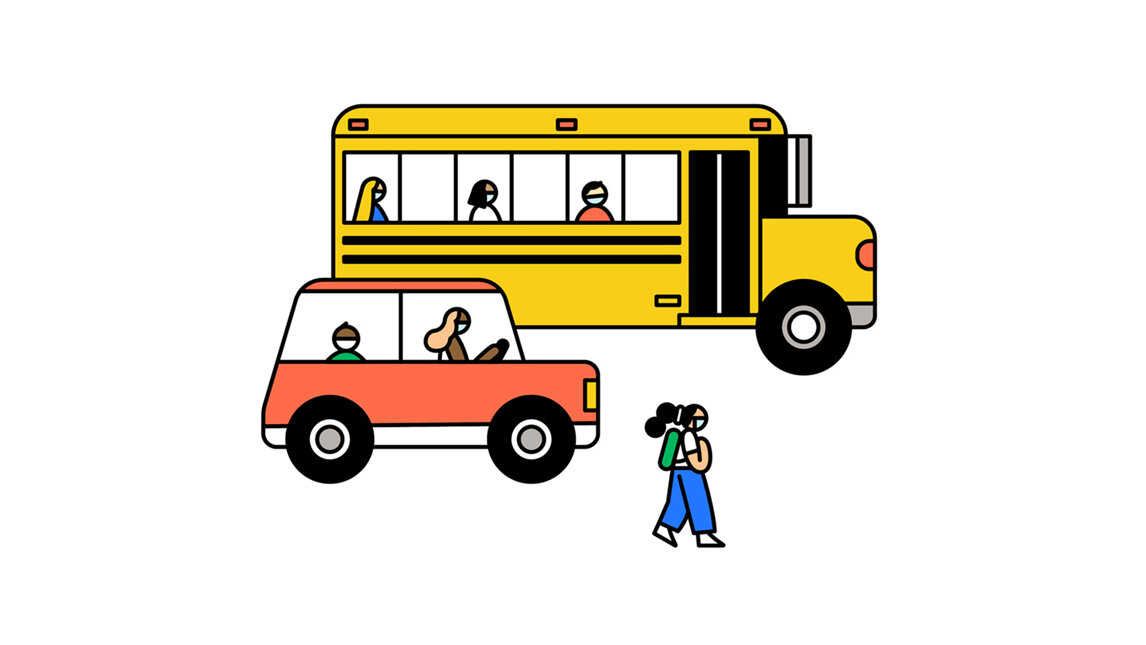How Safe Is Your School's Reopening Plan? Here's What To Look For
As schools across the country grapple with bringing kids back into the classroom, parents — and teachers — are worried about safety. We asked pediatricians, infectious disease specialists and education experts for help evaluating school district plans.
What we learned: There's no such thing as zero risk, but certain practices can lower the risk of an outbreak at school and keep kids, teachers and families safer.
If you're considering sending your child back to school this fall or in the coming months, start with assessing both your own family's personal risk and the level of spread in your community. The American Federation of Teachers says it doesn't consider in-person school to be safe unless fewer than 5% of coronavirus tests in an area are positive. As of late July, that one benchmark disqualified eight of the 10 largest public school districts in the country.
If your family is relatively healthy and local numbers look good, here's how to weigh the key elements of a school reopening plan.
1) Getting to school: Riding the bus
Look for: Limited capacity and physical distancing. Plus masks

Buses combine several risk factors for spread: Kids are in a closed space, for an extended period of time, often with poor ventilation.
"The best option for children getting to school would be for their parents to drop them off," says Dr. Tina Tan, pediatrics infectious disease specialist at Northwestern University in Chicago. Or walk or bike to school.
But that's not an option for many families, so to make busing safer, limit capacity to 50%, says Dr. Ravina Kullar, an epidemiologist and spokesperson for the Infectious Disease Society of America. The children and the driver should be physically distanced by at least 6 feet, and everyone should wear masks. Ideally there's assigned seating, and tape marks designating where kids should sit, she says.
If possible, keep the bus windows open to improve ventilation, says Dr. Judith Guzman-Cottrill, a pediatric infectious disease specialist at Oregon Health & Science University. Airflow helps dilute the virus, this reducing the risk of infection.
"Students' hands should be sanitized before they enter the bus," says Laurie Combe, president of the National Association of School Nurses. Combe suggests mounting a sanitizer dispenser at the entrance of the bus.
2) Entry-to-school guidelines
Look for: Clear policies requiring sick kids and teachers to stay home
Our experts agree: Plans should drive home the message that staff and kids must stay home if they have any symptoms of COVID-19 at all.
"As a society we are going to have to learn that if we're sick, we stay home — always," says Dr. William Miller, an epidemiologist at Ohio State University. It's a big cultural shift, he says, because many of us are used to "powering through illness and sometimes we expect the same of our children."
There is no one perfect way to enforce this. Some experts suggest schools rely on messaging, while others prefer schools screen for symptoms.
Symptom checks at school may not be foolproof, but they reinforce the message that parents should keep kids home if they're sick, says Laurie Combe. "If there was optimal staffing for this situation, then the best practice would be to be able to screen as people enter the building."
The CDC currently does not recommend schools conduct widespread symptom screenings. It suggests parents check their children at home before coming to school.
Kids should stay home even if they have only very mild symptoms, "just a headache or stomach ache," says Dr. Preeti Malani, an infectious disease specialist and chief health officer at the University of Michigan. And when parents are sick, children should stay home too, adds Miller. This may be difficult for economic reasons for many families.
If teachers or staff have to miss work, then, Malani says school "policies have to CONTINUE READING: As Schools Weigh Reopening, Here's How They Can Lower Coronavirus Risk : Shots - Health News : NPR


